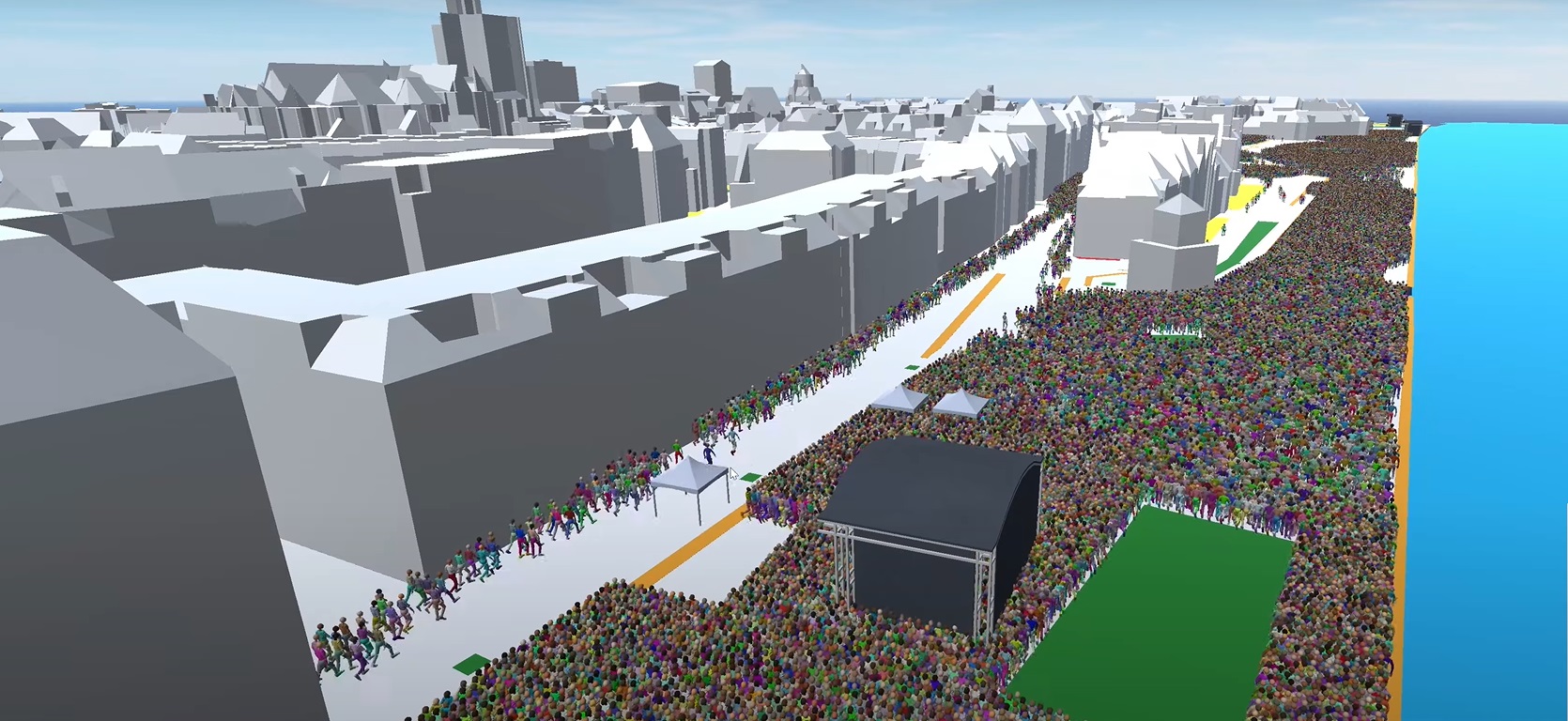
Year 2021 in review: A super real time engine for interactive crowd simulations
We have achieved our 2021 milestone: a super real time engine for interactive crowd simulations.
A modern data-oriented design yielded a 25% speed improvement (over our 2020 edition), and a more than 10x speed improvement over our initial engine developed at Utrecht University. Super-real time simulations enable making future crowd flow predictions.
We have written the engine from scratch in the programming language Rust. Rust gives more performance, reliability and productivity compared to C++.
We added support for multi-layered environments, such as a multi-level building. Huge environments of hundreds of squared kilometers are supported. Dynamic updates are handled asynchronously, making them almost instant for an environment with 100K agents. The engine is deterministic, so that we can build huge digital twins with millions of pedestrians in cloud-based applications.
The engine offers many features for creating realistic simulations, including social groups, density-based re-planning, differently sized pedestrians using one navigation mesh, visibility queries, action areas, pedestrian profiles, parameter distributions, and more.
The engine blends well with game engines such as Unity and Unreal to integrate it into your application. This example shows an interactive Unity environment with 250 000 agents.
Read, like and share this post on our LinkedIn!